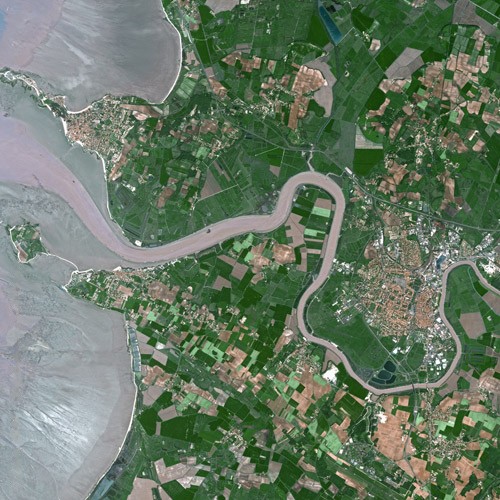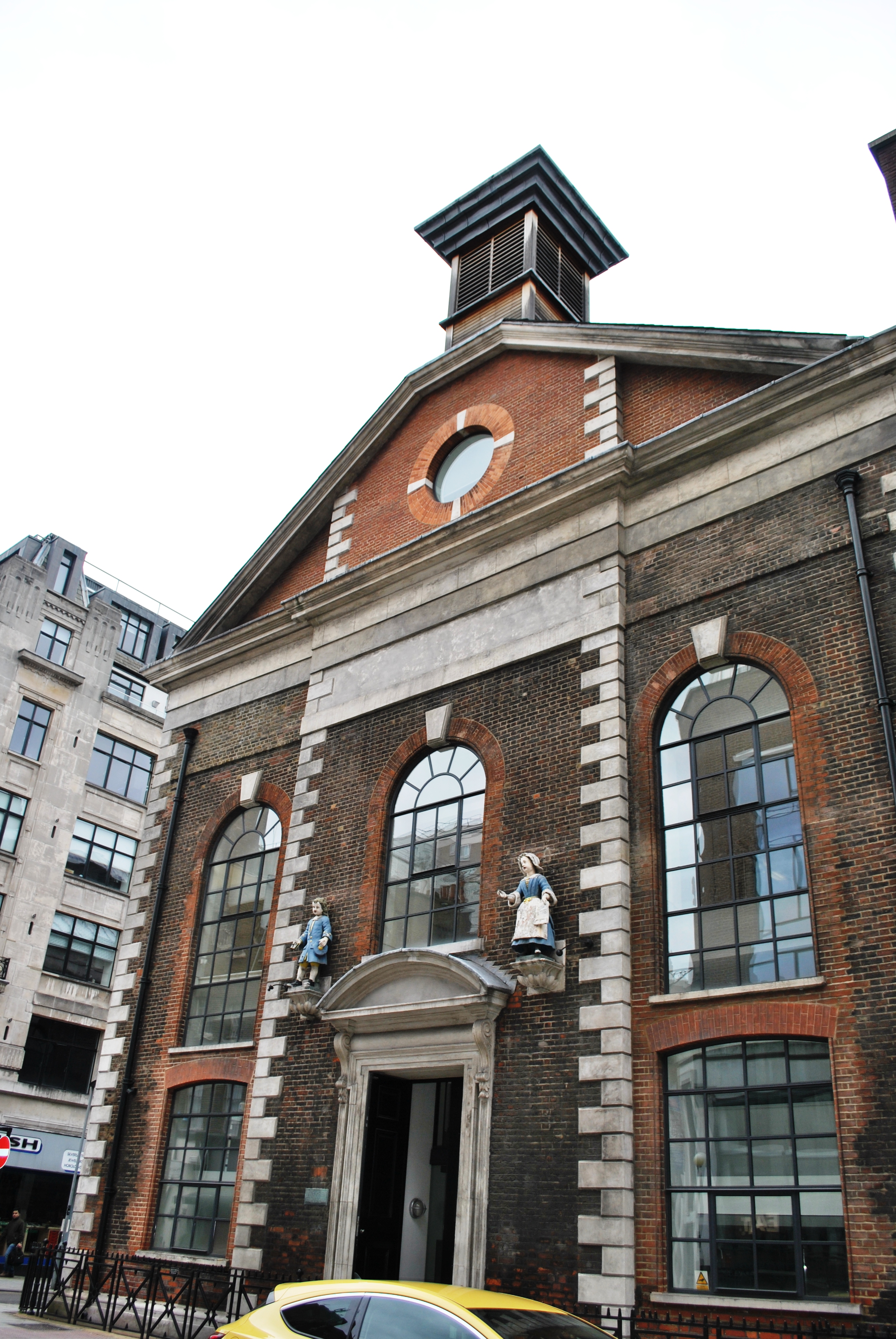|
Jeanne Baré
Jeanne Baret (; 27 July 1740 – 5 August 1807) is recognised as the first woman to have completed a voyage of circumnavigation of the globe, which she did via maritime transport. A key part of her journey was as a member of Louis Antoine de Bougainville's expedition on the ships '' La Boudeuse'' and '' Étoile'' in 1766–1769. Jeanne Baret joined the expedition disguised as a man, calling herself Jean Baret. She enlisted as valet and assistant to the expedition's naturalist, Philibert Commerson, shortly before Bougainville's ships sailed from France. According to Bougainville's account, Baret was an expert botanist. Early life Jeanne Baret was born on 27 July 1740, in the village of La Comelle in the Burgundy region of France, and baptized the next day. Her record of baptism survives and identifies her as the legitimate issue of Jean Baret and Jeanne Pochard. Her father is identified as a day laborer and is likely to have been illiterate. Her mother died in November 1 ... [...More Info...] [...Related Items...] OR: [Wikipedia] [Google] [Baidu] |
La Comelle
La Comelle () is a Communes of France, commune in the Saône-et-Loire Departments of France, department in the Regions of France, region of Bourgogne-Franche-Comté in eastern France. It was the birthplace of Jeanne Baret, the first woman to circumnavigate the world. See also *Communes of the Saône-et-Loire department *Parc naturel régional du Morvan References Communes of Saône-et-Loire {{Autun-geo-stub ... [...More Info...] [...Related Items...] OR: [Wikipedia] [Google] [Baidu] |
Danielle Clode
Danielle Clode is an Australian author of literary nonfiction, history and children's books. She is an associate professor of creative writing at Flinders University. Early life and education Clode was born in Adelaide in 1968 and spent her early years in Port Lincoln, South Australia. She later lived on a boat with her parents travelling around Australia and completing her schooling by correspondence. Clode received her B.A. at the University of Adelaide in 1989 and her D.Phil. in zoology at the University of Oxford in 1993. Career Clode worked at Melbourne University and the Victorian Writers Centre. In 2011, she moved to Flinders University. She has written reviews for ''Australian Book Review''. Awards and honors Clode was a Rhodes Scholar in 1990. She has received the Victorian Premier’s Literary Award for Nonfiction in 2007 and a Whitley Award for Best Popular Zoology book in 2016. Clode's 2018 biography of Australian naturalist Edith Coleman, ''The Wasp and ... [...More Info...] [...Related Items...] OR: [Wikipedia] [Google] [Baidu] |
Rio De Janeiro
Rio de Janeiro, or simply Rio, is the capital of the Rio de Janeiro (state), state of Rio de Janeiro. It is the List of cities in Brazil by population, second-most-populous city in Brazil (after São Paulo) and the Largest cities in the Americas, sixth-most-populous city in the Americas. Founded in 1565 by the Portuguese people, Portuguese, the city was initially the seat of the Captaincy of Rio de Janeiro, a domain of the Portuguese Empire. In 1763, it became the capital of the State of Brazil, a List of states of the Portuguese Empire, state of the Portuguese Empire. In 1808, when the Transfer of the Portuguese Court to Brazil, Portuguese Royal Court moved to Brazil, Rio de Janeiro became the seat of the court of Queen Maria I of Portugal. She subsequently, under the leadership of her son the prince regent John VI of Portugal, raised Brazil to the dignity of a kingdom, within the United Kingdom of Portugal, Brazil and the Algarves, United Kingdom of Portugal, Brazil, and Algar ... [...More Info...] [...Related Items...] OR: [Wikipedia] [Google] [Baidu] |
Montevideo
Montevideo (, ; ) is the capital city, capital and List of cities in Uruguay, largest city of Uruguay. According to the 2023 census, the city proper has a population of 1,302,954 (about 37.2% of the country's total population) in an area of . Montevideo is situated on the southern coast of the country, on the northeastern bank of the Río de la Plata. A Portuguese garrison was established in the place where today is the city of Montevideo in November 1723. The Portuguese garrison was expelled in February 1724 by a Spanish soldier, Bruno Mauricio de Zabala, as a strategic move amidst the Spanish people, Spanish-Portuguese people, Portuguese dispute over the Río de la Plata Basin, platine region. There is no official document establishing the foundation of the city, but the "Diario" of Bruno Mauricio de Zabala officially mentions the date of 24 December 1726 as the foundation, corroborated by presential witnesses. The complete independence from Buenos Aires as a real city was not ... [...More Info...] [...Related Items...] OR: [Wikipedia] [Google] [Baidu] |
Line-crossing Ceremony
The line-crossing ceremony is an initiation rite in some English-speaking countries that commemorates a person's first crossing of the equator. The tradition may have originated with ceremonies when passing headlands, and become a "folly" sanctioned as a boost to morale,Robert FitzRoy (1839) ''Narrative of the surveying voyages of His Majesty's Ships Adventure and Beagle between the years 1826 and 1836'', London: Henry Colburn. pp57–58 or have been created as a test for seasoned sailors to ensure their new shipmates were capable of handling long, rough voyages. Equator-crossing ceremonies, typically featuring King Neptune, are common in the navy and are also sometimes carried out for passengers' entertainment on civilian ocean liners and cruise ships. They are also performed in the merchant navy and aboard sail training ships. Throughout history, line-crossing ceremonies have sometimes become dangerous hazing rituals. Most modern navies have instituted regulations that proh ... [...More Info...] [...Related Items...] OR: [Wikipedia] [Google] [Baidu] |
Karl Heinrich Von Nassau-Siegen
Karl Heinrich von Nassau-Siegen (; 5 January 1743 – 10 April 1808), was a French-born fortune-seeker and adventurer active in Spain, Poland and the Russian Empire. A controversial figure, he was best known as Catherine II's least successful naval commander. Charles Henry, in Catherine II's own words, "had everywhere the reputation of a crazy fellow". He sailed around the world with Bougainville, "fought tigers bare-handed" in Central Africa and reportedly seduced the Queen of Tahiti. His tiger hunt is the subject oa vast canvasby Francesco Casanova. Life He was the son of Maximilien Guillaume Adolphe of Nassau-Siegen (d. 1748) and Amicie de Monchy (d. 1752). Charles Henry's family and title were disputed. His father was in 1756 posthumously recognized in France to be a legitimate son of Emmanuel Ignatius of Nassau-Siegen, [...More Info...] [...Related Items...] OR: [Wikipedia] [Google] [Baidu] |
Head (watercraft)
In sailing vessels, the head is the ship's toilet. The name derives from sailing ships in which the toilet area for the regular sailors was placed at the head or bow of the vessel. Design In sailing ships, the toilet was placed in the bow somewhat above the water line with vents or slots cut near the floor level allowing normal wave action to wash out the facility. Only the captain had a private toilet near his quarters, at the stern of the ship in the quarter gallery. The plans of 18th-century naval ships do not reveal the construction of toilet facilities when the ships were first built. The Journal of Aaron Thomas aboard HMS ''Lapwing'' in the Caribbean Sea in the 1790s records that a canvas tube was attached, presumably by the ship's sailmaker, to a superstructure beside the bowsprit near the figurehead, ending just above the normal waterline. In many modern boats, the heads look similar to seated flush toilets but use a system of valves and pumps that brings sea water ... [...More Info...] [...Related Items...] OR: [Wikipedia] [Google] [Baidu] |
Rochefort, Charente-Maritime
Rochefort (; ), unofficially Rochefort-sur-Mer (; ) for disambiguation, is a city and communes of France, commune in Southwestern France, a port on the Charente (river), Charente estuary. It is a Subprefectures in France, subprefecture of the Charente-Maritime Departments of France, department, located in the administrative regions of France, administrative region of Nouvelle-Aquitaine (before 2015: Poitou-Charentes). Geography Rochefort lies on the river Charente (river), Charente, close to its outflow into the Atlantic Ocean. It is about 30 km southeast of La Rochelle. Rochefort station has rail connections to La Rochelle, Nantes and Bordeaux. History In December 1665, Rochefort was chosen by Jean-Baptiste Colbert as a place of "refuge, defence and supply" for the French Navy. The Arsenal de Rochefort served as a naval base and dockyard until it closed in 1926. In September 1757, Rochefort was the target of an ambitious Raid on Rochefort, British raid during the Seven Yea ... [...More Info...] [...Related Items...] OR: [Wikipedia] [Google] [Baidu] |
French Livre
The livre (abbreviation: Pound sign, £ or Livre tournois, ₶., French language, French for (pound)) was the currency of Kingdom of France and its predecessor states of Francia and West Francia from 781 to 1794. Several different livres existed, some concurrently. The livre was the name of coins and of units of account. History Origin and etymology The livre was established by Charlemagne as a unit of account equal to one Pound (mass), pound of silver. It was subdivided into 20 ''French sol, sous'' (also ''sols''), each sou equalling 12 ''French denier, deniers''. The word ''livre'' came from the Latin word ''Ancient Roman units of measurement#Weight, libra'', a Roman unit of weight and still the name of a Pound (mass), pound in modern French, and the denier comes from the Roman denarius. This system and the denier itself served as the model for many of Europe's currencies, including the British pound, Italian lira, Spanish dinero and the Portuguese dinheiro. This first l ... [...More Info...] [...Related Items...] OR: [Wikipedia] [Google] [Baidu] |
Foundling Hospital
The Foundling Hospital (formally the Hospital for the Maintenance and Education of Exposed and Deserted Young Children) was a children's home in London, England, founded in 1739 by the philanthropy, philanthropic Captain (nautical), sea captain Thomas Coram. It was established for the "education and maintenance of exposed and deserted young children." The word "hospital" was used in a more general sense than it is in the 21st century, simply indicating the institution's "hospitality" to those less fortunate. Nevertheless, one of the top priorities of the committee at the Foundling Hospital was children's health, as they combated smallpox, fevers, Tuberculosis, consumption, dysentery and even infections from everyday activities like teething that drove up mortality rates and risked epidemics. With their energies focused on maintaining a disinfected environment, providing simple clothing and fare, the committee paid less attention to and spent less on developing children's educatio ... [...More Info...] [...Related Items...] OR: [Wikipedia] [Google] [Baidu] |
Paris
Paris () is the Capital city, capital and List of communes in France with over 20,000 inhabitants, largest city of France. With an estimated population of 2,048,472 residents in January 2025 in an area of more than , Paris is the List of cities in the European Union by population within city limits, fourth-most populous city in the European Union and the List of cities proper by population density, 30th most densely populated city in the world in 2022. Since the 17th century, Paris has been one of the world's major centres of finance, diplomacy, commerce, culture, Fashion capital, fashion, and gastronomy. Because of its leading role in the French art, arts and Science and technology in France, sciences and its early adoption of extensive street lighting, Paris became known as the City of Light in the 19th century. The City of Paris is the centre of the Île-de-France region, or Paris Region, with an official estimated population of 12,271,794 inhabitants in January 2023, or ... [...More Info...] [...Related Items...] OR: [Wikipedia] [Google] [Baidu] |
Huguenot
The Huguenots ( , ; ) are a Religious denomination, religious group of French people, French Protestants who held to the Reformed (Calvinist) tradition of Protestantism. The term, which may be derived from the name of a Swiss political leader, the Genevan burgomaster Besançon Hugues, was in common use by the mid-16th century. ''Huguenot'' was frequently used in reference to those of the Reformed Church of France from the time of the Protestant Reformation. By contrast, the Protestant populations of eastern France, in Alsace, Moselle (department), Moselle, and Montbéliard, were mainly Lutheranism, Lutherans. In his ''Encyclopedia of Protestantism'', Hans Hillerbrand wrote that on the eve of the St. Bartholomew's Day massacre in 1572, the Huguenot community made up as much as 10% of the French population. By 1600, it had declined to 7–8%, and was reduced further late in the century after the return of persecution under Louis XIV, who instituted the ''dragonnades'' to forcibly ... [...More Info...] [...Related Items...] OR: [Wikipedia] [Google] [Baidu] |








